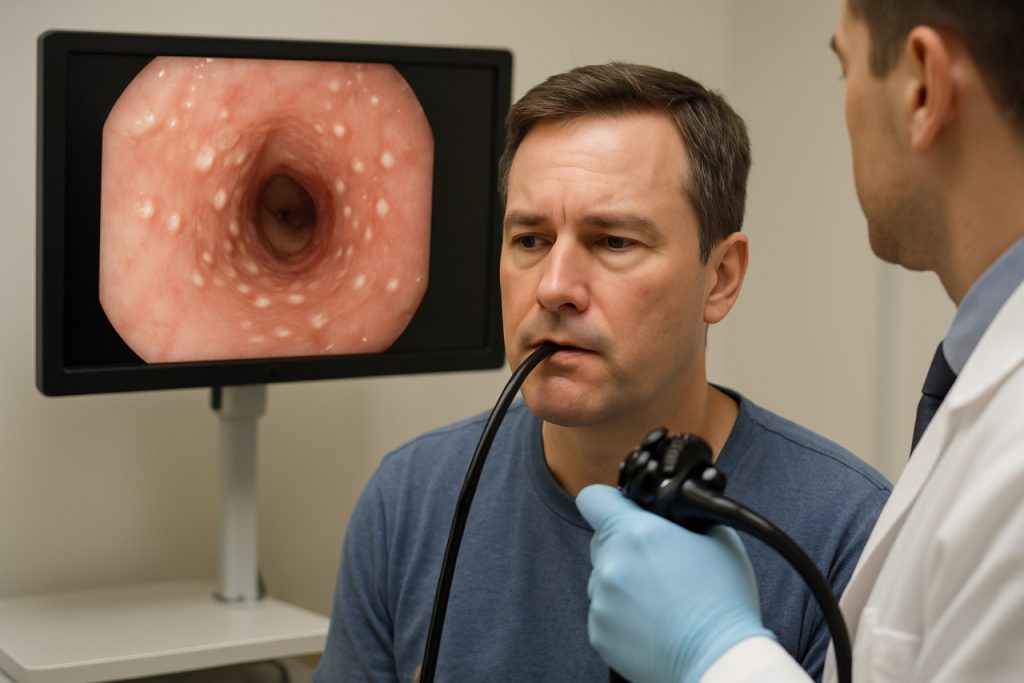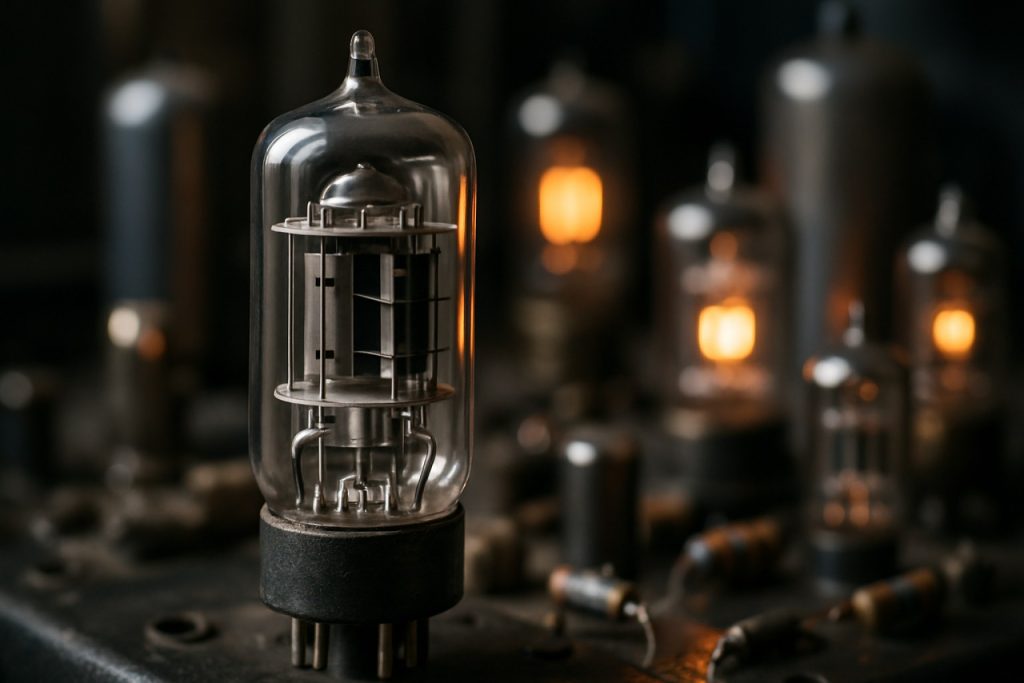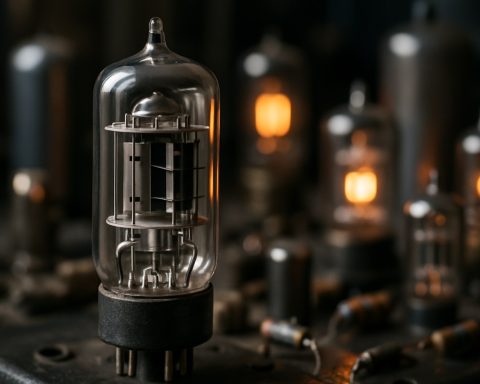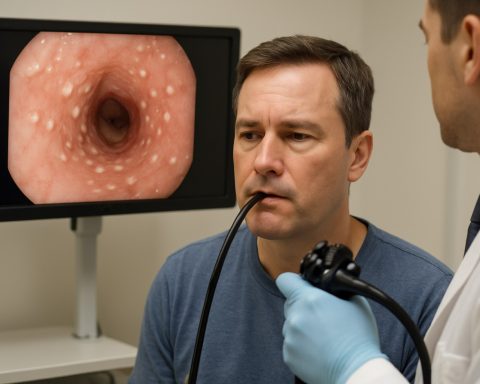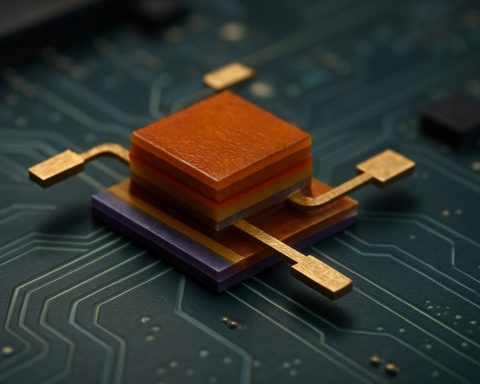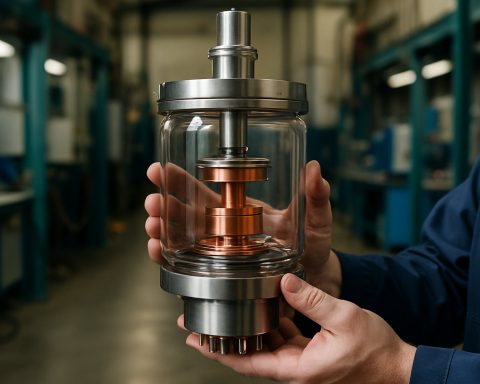Surface Plasmon Enhanced Fluorescence: Unleashing Ultra-Sensitive Detection for Next-Gen Biosensing and Imaging. Discover How Plasmonics is Transforming Fluorescence-Based Technologies. (2025)
- Introduction to Surface Plasmon Enhanced Fluorescence (SPEF)
- Fundamental Principles: Plasmonics and Fluorescence Interactions
- Key Materials and Nanostructures for SPEF
- Experimental Techniques and Instrumentation
- Applications in Biosensing and Medical Diagnostics
- Advancements in Imaging and Single-Molecule Detection
- Comparative Analysis: SPEF vs. Conventional Fluorescence Methods
- Market Growth and Public Interest: Trends and Forecasts (2024–2030)
- Challenges, Limitations, and Regulatory Considerations
- Future Outlook: Emerging Technologies and Potential Impact
- Sources & References
Introduction to Surface Plasmon Enhanced Fluorescence (SPEF)
Surface Plasmon Enhanced Fluorescence (SPEF) is an advanced photonic technique that leverages the unique properties of surface plasmons to amplify the fluorescence signals of nearby molecules. Surface plasmons are coherent oscillations of free electrons at the interface between a metal and a dielectric, typically excited by incident light at specific wavelengths. When fluorophores are positioned in close proximity to metallic nanostructures—such as gold or silver films or nanoparticles—the local electromagnetic field is significantly intensified due to the excitation of surface plasmons. This interaction can lead to a substantial increase in the fluorescence emission of the fluorophores, a phenomenon that forms the basis of SPEF.
The principle of SPEF is rooted in the enhancement of the local electromagnetic field near the metal surface, which increases the excitation rate of the fluorophores. Additionally, the presence of the metal can modify the radiative decay rates, further boosting the fluorescence intensity. The degree of enhancement depends on several factors, including the type of metal, the geometry and size of the nanostructures, the distance between the fluorophore and the metal surface, and the spectral overlap between the plasmon resonance and the fluorophore’s absorption or emission bands.
SPEF has emerged as a powerful tool in various scientific and technological fields, particularly in biosensing, medical diagnostics, and analytical chemistry. By amplifying weak fluorescence signals, SPEF enables the detection of low-abundance biomolecules, improving the sensitivity and specificity of assays. This capability is especially valuable in applications such as single-molecule detection, immunoassays, and DNA microarrays. The technique is also being explored for use in advanced imaging modalities and in the development of novel photonic devices.
Research and development in SPEF are supported by leading scientific organizations and institutions worldwide. For example, National Institute of Standards and Technology (NIST) in the United States conducts foundational research in nanophotonics and plasmonics, contributing to the understanding and standardization of plasmon-enhanced phenomena. Similarly, the French National Centre for Scientific Research (CNRS) is involved in pioneering studies on the interaction between light and nanostructured materials, including surface plasmon effects. These efforts are complemented by collaborative initiatives across academia and industry, driving innovation in the design and application of SPEF-based technologies.
As the field advances, ongoing research aims to optimize the design of plasmonic substrates, improve the reproducibility of enhancement effects, and expand the range of applications. The integration of SPEF with microfluidics, lab-on-a-chip systems, and next-generation biosensors is expected to further enhance its impact in both fundamental research and practical diagnostics by 2025 and beyond.
Fundamental Principles: Plasmonics and Fluorescence Interactions
Surface plasmon enhanced fluorescence (SPEF) is a phenomenon that arises from the interaction between fluorescent molecules and surface plasmons—coherent oscillations of free electrons at the interface between a metal and a dielectric. The fundamental principles underlying SPEF are rooted in the field of plasmonics, which explores how electromagnetic fields interact with conduction electrons in metallic nanostructures. When light impinges on a metal surface under specific conditions, it can excite surface plasmons, leading to highly localized and intensified electromagnetic fields near the metal surface.
Fluorescence, a process where certain molecules (fluorophores) absorb photons and re-emit them at longer wavelengths, is inherently limited by factors such as quantum yield and photobleaching. However, when fluorophores are positioned in close proximity (typically within 10–100 nm) to a plasmonic metal surface—commonly gold or silver—the local electromagnetic field enhancement can significantly increase the excitation rate of the fluorophores. This results in a higher emission intensity, a phenomenon central to SPEF. The enhancement is most pronounced when the plasmon resonance frequency of the metal matches the excitation or emission wavelength of the fluorophore.
The interaction between plasmons and fluorophores is governed by several key parameters: the distance between the fluorophore and the metal surface, the spectral overlap between the plasmon resonance and the fluorophore’s absorption/emission, and the geometry of the metallic nanostructure. At optimal distances, the near-field enhancement boosts the excitation rate without introducing significant non-radiative energy transfer (quenching) to the metal. If the fluorophore is too close to the metal, non-radiative decay dominates, leading to fluorescence quenching rather than enhancement.
SPEF is not only a result of increased excitation but also of modified radiative decay rates. The presence of a plasmonic surface can alter the photonic environment, increasing the radiative decay rate of the fluorophore and thus its quantum yield. This dual mechanism—enhanced excitation and modified emission—forms the basis for the dramatic fluorescence enhancements observed in SPEF systems.
The principles of SPEF have been extensively studied and are foundational to the development of advanced biosensors, imaging techniques, and analytical devices. Leading research organizations and scientific bodies such as the Nature Publishing Group and the Royal Society of Chemistry have published numerous studies elucidating the mechanisms and applications of plasmon-enhanced fluorescence. The field continues to evolve, with ongoing research focused on optimizing nanostructure design and understanding the quantum mechanical aspects of plasmon-fluorophore interactions.
Key Materials and Nanostructures for SPEF
Surface Plasmon Enhanced Fluorescence (SPEF) leverages the unique optical properties of metallic nanostructures to amplify fluorescence signals, a phenomenon critical for applications in biosensing, imaging, and analytical chemistry. The effectiveness of SPEF is fundamentally determined by the choice of materials and the design of nanostructures that support surface plasmon resonances.
Key Materials: The most widely used materials for SPEF are noble metals, particularly gold (Au) and silver (Ag), due to their strong plasmonic responses in the visible and near-infrared regions. Gold is favored for its chemical stability and biocompatibility, making it suitable for biological applications. Silver, while offering sharper plasmon resonances and higher field enhancements, is more prone to oxidation, which can limit its long-term performance. Other metals such as aluminum (Al) are also explored, especially for ultraviolet plasmonics, but their use in SPEF is less common due to higher losses and fabrication challenges.
In addition to pure metals, alloyed and core-shell nanostructures are gaining attention. For example, gold-silver alloys or gold-coated silver nanoparticles can combine the advantages of both metals, optimizing plasmonic properties and stability. The use of dielectric coatings, such as silica shells, can further enhance stability and control the distance between the fluorophore and the metal surface, which is crucial for maximizing fluorescence enhancement while minimizing quenching.
Nanostructure Design: The geometry and arrangement of nanostructures play a pivotal role in SPEF. Commonly employed nanostructures include nanoparticles (spheres, rods, cubes), nanoshells, nanostars, and nanohole arrays. Each geometry supports distinct plasmonic modes, influencing the local electromagnetic field enhancement and, consequently, the degree of fluorescence amplification. For instance, gold nanorods exhibit tunable longitudinal plasmon resonances, allowing spectral matching with specific fluorophores. Nanostars and sharp-tipped structures can generate intense “hot spots” with extremely high field enhancements, ideal for single-molecule detection.
Ordered arrays of nanostructures, fabricated via techniques such as electron beam lithography or nanoimprint lithography, enable reproducible and tunable plasmonic substrates. These arrays can be engineered to support collective plasmonic modes (surface lattice resonances), further boosting fluorescence signals. The precise control over interparticle spacing and arrangement is essential for optimizing the coupling between plasmons and fluorophores.
Recent advances also include hybrid nanostructures that integrate plasmonic metals with two-dimensional materials (e.g., graphene) or semiconductor quantum dots, offering new avenues for tailored optical responses and enhanced photostability.
The development and characterization of these materials and nanostructures are supported by leading research institutions and standardization bodies such as the National Institute of Standards and Technology and the Royal Society of Chemistry, which provide guidelines and reference materials for plasmonic research.
Experimental Techniques and Instrumentation
Surface Plasmon Enhanced Fluorescence (SPEF) leverages the unique optical properties of surface plasmons—coherent electron oscillations at the interface between a metal and a dielectric—to amplify fluorescence signals. The experimental realization of SPEF requires precise instrumentation and carefully designed techniques to optimize the interaction between fluorophores and plasmonic surfaces.
A typical SPEF setup involves a metallic substrate, most commonly gold or silver, due to their favorable plasmonic characteristics in the visible and near-infrared spectrum. The metal film is often deposited onto a glass slide using techniques such as thermal evaporation or sputtering, ensuring a smooth and uniform surface. The thickness of the metal layer is critical, usually ranging from 30 to 60 nm, to support strong surface plasmon resonance (SPR) while minimizing optical losses.
To excite surface plasmons, the Kretschmann configuration is widely employed. In this arrangement, a prism is used to couple incident light into the metal film at a specific angle, generating an evanescent field that excites surface plasmons. The sample containing fluorophores is placed in close proximity (typically within 10–20 nm) to the metal surface, as the enhancement effect decays exponentially with distance. Precise control of this separation is achieved using self-assembled monolayers, polymer spacers, or nanofabricated structures.
Fluorescence emission is collected using high-sensitivity detectors such as photomultiplier tubes (PMTs) or charge-coupled devices (CCDs), often integrated into confocal or total internal reflection fluorescence (TIRF) microscopes. These systems allow for spatially resolved detection and minimize background noise. Additionally, spectrometers are used to analyze the emission spectra, enabling quantitative assessment of enhancement factors.
Advanced nanofabrication techniques, including electron beam lithography and nanoimprint lithography, are increasingly used to create patterned plasmonic nanostructures—such as nanoparticle arrays or nanohole arrays—that further boost and localize the electromagnetic field. These engineered substrates can be tailored to specific excitation and emission wavelengths, offering tunable enhancement for various fluorophores.
Calibration and validation of SPEF systems often involve reference samples with known fluorescence properties. Standardization efforts are supported by organizations such as the National Institute of Standards and Technology, which provides reference materials and measurement protocols for fluorescence and plasmonic applications.
Overall, the integration of precise optical components, advanced nanofabrication, and rigorous calibration protocols is essential for reliable and reproducible SPEF measurements, enabling applications in biosensing, medical diagnostics, and single-molecule detection.
Applications in Biosensing and Medical Diagnostics
Surface plasmon enhanced fluorescence (SPEF) has emerged as a transformative technique in biosensing and medical diagnostics, offering significant improvements in sensitivity, specificity, and detection limits. SPEF leverages the unique properties of surface plasmons—coherent oscillations of electrons at the interface between a metal and a dielectric—to amplify the fluorescence signals of nearby fluorophores. This enhancement is primarily achieved through the use of metallic nanostructures, such as gold or silver nanoparticles, which can concentrate electromagnetic fields and increase the excitation and emission rates of fluorescent molecules.
In biosensing, SPEF enables the detection of biomolecules at extremely low concentrations, which is critical for early disease diagnosis and monitoring. For example, the integration of SPEF with immunoassays allows for the quantification of proteins, nucleic acids, and other biomarkers with much higher sensitivity than conventional fluorescence-based assays. This is particularly valuable in the detection of cancer biomarkers, infectious agents, and cardiac markers, where early and accurate detection can significantly impact patient outcomes. The National Institutes of Health has supported research demonstrating that SPEF-based biosensors can achieve detection limits down to the single-molecule level, opening new possibilities for point-of-care diagnostics and personalized medicine.
In medical diagnostics, SPEF is being applied to the development of lab-on-a-chip devices and microfluidic platforms, which integrate sample preparation, reaction, and detection in a single, miniaturized system. These platforms benefit from the high sensitivity of SPEF, enabling rapid and multiplexed analysis of clinical samples such as blood, saliva, or urine. The National Cancer Institute, a leading authority in cancer research, has highlighted the potential of plasmonic-enhanced fluorescence for non-invasive liquid biopsy techniques, which can detect circulating tumor DNA or exosomes with unprecedented sensitivity.
Furthermore, SPEF is being explored for real-time imaging of cellular processes and molecular interactions in living cells. By coupling fluorescent probes with plasmonic nanostructures, researchers can visualize dynamic biological events at the nanoscale, providing insights into disease mechanisms and drug responses. Organizations such as the National Institute of Standards and Technology are actively involved in standardizing and advancing plasmonic biosensing technologies to ensure their reliability and reproducibility in clinical settings.
Overall, the integration of surface plasmon enhanced fluorescence into biosensing and medical diagnostics is driving the development of next-generation diagnostic tools that are more sensitive, rapid, and capable of multiplexed detection, paving the way for earlier disease detection and more effective patient management.
Advancements in Imaging and Single-Molecule Detection
Surface plasmon enhanced fluorescence (SPEF) has emerged as a transformative approach in the field of imaging and single-molecule detection, offering significant improvements in sensitivity and resolution. SPEF leverages the unique properties of surface plasmons—coherent oscillations of electrons at the interface between a metal and a dielectric—to amplify the fluorescence signals of nearby molecules. This enhancement is primarily achieved by coupling fluorophores to metallic nanostructures, such as gold or silver nanoparticles, which support localized surface plasmon resonances (LSPR). The resulting electromagnetic field amplification near the metal surface leads to increased excitation and emission rates of the fluorophores, thereby boosting the detectable signal.
Recent advancements in nanofabrication and material science have enabled the precise engineering of plasmonic substrates, allowing for tailored enhancement effects and improved reproducibility. Techniques such as electron beam lithography and self-assembly have facilitated the creation of nanostructures with controlled size, shape, and spacing, optimizing the plasmonic response for specific fluorophores and applications. These developments have been instrumental in pushing the limits of detection down to the single-molecule level, a critical milestone for applications in molecular diagnostics, biosensing, and super-resolution microscopy.
In imaging, SPEF has enabled the visualization of biological processes at unprecedented spatial and temporal resolutions. By enhancing the fluorescence signal, researchers can detect and track individual biomolecules in complex environments, such as living cells, with minimal photobleaching and phototoxicity. This capability is particularly valuable for studying dynamic interactions and rare events that would otherwise be obscured by background noise or limited by conventional fluorescence techniques. The integration of SPEF with advanced imaging modalities, including total internal reflection fluorescence (TIRF) microscopy and confocal microscopy, has further expanded its utility in life sciences research.
On the technological front, organizations such as the National Institute of Standards and Technology (NIST) and the National Institutes of Health (NIH) have supported research into plasmonic materials and their applications in biosensing and imaging. These efforts have contributed to the development of standardized protocols and reference materials, facilitating the broader adoption of SPEF in both academic and industrial settings. As the field continues to evolve, ongoing research is focused on improving the biocompatibility of plasmonic substrates, minimizing quenching effects, and integrating SPEF with emerging quantum and photonic technologies.
In summary, surface plasmon enhanced fluorescence represents a significant advancement in imaging and single-molecule detection, offering unparalleled sensitivity and enabling new frontiers in biological and chemical analysis. With continued innovation and interdisciplinary collaboration, SPEF is poised to play a central role in the next generation of analytical and diagnostic technologies.
Comparative Analysis: SPEF vs. Conventional Fluorescence Methods
Surface Plasmon Enhanced Fluorescence (SPEF) represents a significant advancement over conventional fluorescence methods, offering improved sensitivity and signal amplification through the interaction of fluorophores with surface plasmons—coherent electron oscillations at the interface between a metal and a dielectric. This section provides a comparative analysis of SPEF and traditional fluorescence techniques, focusing on sensitivity, specificity, photostability, and practical applications.
Conventional fluorescence methods rely on the direct excitation of fluorophores by incident light, followed by the emission of photons at characteristic wavelengths. While widely used in bioimaging, diagnostics, and chemical sensing, these methods often suffer from limitations such as low signal intensity, photobleaching, and background noise. In contrast, SPEF leverages the unique properties of surface plasmons, typically generated on noble metal surfaces like gold or silver, to enhance the local electromagnetic field experienced by nearby fluorophores. This interaction can lead to orders-of-magnitude increases in fluorescence intensity, enabling the detection of lower analyte concentrations and improving the signal-to-noise ratio.
A key advantage of SPEF is its ability to overcome the diffraction limit and enhance spatial resolution. The localized surface plasmon resonance (LSPR) effect confines the electromagnetic field to nanoscale regions, allowing for highly sensitive detection in applications such as single-molecule analysis and early disease diagnostics. Additionally, the enhanced field can reduce the excitation power required, thereby minimizing photodamage and photobleaching of sensitive biological samples. This is particularly beneficial in live-cell imaging and long-term monitoring studies.
However, SPEF also introduces certain challenges not present in conventional fluorescence. The enhancement effect is highly dependent on the distance between the fluorophore and the metal surface, with optimal enhancement typically occurring within 10–20 nanometers. Precise control over this spacing is critical, as quenching can occur if the fluorophore is too close to the metal. Furthermore, the fabrication of reproducible and stable plasmonic substrates requires advanced nanofabrication techniques, which may increase complexity and cost compared to standard fluorescence assays.
In summary, while conventional fluorescence remains a robust and accessible tool for many applications, SPEF offers superior sensitivity, lower detection limits, and improved photostability, making it particularly valuable for advanced biosensing and analytical applications. Ongoing research by organizations such as the National Institute of Standards and Technology and the Royal Society of Chemistry continues to refine SPEF methodologies, aiming to address current limitations and expand its practical utility in scientific and clinical settings.
Market Growth and Public Interest: Trends and Forecasts (2024–2030)
Surface Plasmon Enhanced Fluorescence (SPEF) is gaining significant momentum in both research and commercial sectors, driven by its ability to dramatically improve the sensitivity and specificity of fluorescence-based detection methods. Between 2024 and 2030, the global market for SPEF technologies is expected to experience robust growth, propelled by expanding applications in biomedical diagnostics, environmental monitoring, and advanced materials science.
A key driver of this growth is the increasing demand for highly sensitive biosensors and diagnostic platforms, particularly in the context of early disease detection and personalized medicine. SPEF enables the detection of biomolecules at ultra-low concentrations, which is critical for applications such as cancer biomarker identification and infectious disease screening. The integration of SPEF with microfluidic and lab-on-a-chip devices is further enhancing its commercial viability, as these platforms are being adopted in point-of-care diagnostics and high-throughput screening environments.
Public interest in SPEF is also rising, as evidenced by the growing number of academic publications, patents, and collaborative projects involving leading research institutions and industry stakeholders. Organizations such as the Nature Publishing Group and the Royal Society of Chemistry regularly feature advances in plasmonic fluorescence enhancement, reflecting the field’s dynamic innovation landscape. Additionally, major scientific conferences, including those organized by the Optica (formerly Optical Society of America), are dedicating sessions to plasmonics and nanophotonics, further highlighting the technology’s growing prominence.
From a regional perspective, North America and Europe are expected to maintain leadership in SPEF research and commercialization, supported by strong funding environments and established photonics industries. However, significant growth is also anticipated in Asia-Pacific, where increased investment in nanotechnology and biotechnology infrastructure is fostering new market entrants and collaborative ventures.
Looking ahead to 2030, the SPEF market is forecasted to benefit from ongoing advancements in nanofabrication techniques, which are enabling the production of more reproducible and scalable plasmonic substrates. The convergence of SPEF with emerging fields such as quantum sensing and wearable diagnostics is likely to open new avenues for innovation and market expansion. As regulatory frameworks evolve to accommodate novel diagnostic technologies, broader adoption of SPEF-based solutions in clinical and environmental settings is anticipated, underscoring the technology’s transformative potential in the coming years.
Challenges, Limitations, and Regulatory Considerations
Surface Plasmon Enhanced Fluorescence (SPEF) has emerged as a powerful technique for amplifying fluorescence signals in biosensing, imaging, and analytical applications. However, several challenges and limitations must be addressed to fully realize its potential, particularly as the field advances into 2025. Additionally, regulatory considerations are increasingly relevant as SPEF-based devices move toward clinical and commercial deployment.
One of the primary technical challenges in SPEF is the precise fabrication and reproducibility of plasmonic nanostructures. The enhancement effect is highly sensitive to the size, shape, and arrangement of metallic nanoparticles or nanostructured films, often requiring advanced lithography or chemical synthesis methods. Variability in these parameters can lead to inconsistent fluorescence enhancement, limiting the reliability of SPEF-based assays. Furthermore, the choice of metal—typically gold or silver—introduces trade-offs between biocompatibility, chemical stability, and plasmonic efficiency. Silver, for example, offers strong plasmonic enhancement but is prone to oxidation and potential cytotoxicity, complicating its use in biological environments.
Another limitation is the distance-dependent nature of the enhancement effect. Fluorophores must be positioned within a narrow range (typically 5–20 nm) from the plasmonic surface to achieve optimal enhancement. Outside this range, fluorescence can be quenched or not enhanced, posing challenges for assay design and surface functionalization. Additionally, background noise from non-specific binding and photobleaching of fluorophores remain concerns, especially in complex biological samples.
From a regulatory perspective, the integration of SPEF into diagnostic devices and clinical workflows introduces new considerations. Regulatory agencies such as the U.S. Food and Drug Administration and the European Medicines Agency require rigorous validation of device performance, reproducibility, and safety. The use of nanomaterials, particularly in in vitro diagnostics or point-of-care devices, is subject to additional scrutiny regarding potential toxicity, environmental impact, and long-term stability. Guidelines for nanomaterial-based medical devices are evolving, with agencies emphasizing risk assessment, standardized characterization, and post-market surveillance.
Furthermore, intellectual property and standardization issues can hinder the widespread adoption of SPEF technologies. The lack of universally accepted protocols for characterizing plasmonic substrates and quantifying enhancement factors complicates cross-laboratory comparisons and regulatory submissions. International organizations such as the International Organization for Standardization are working toward developing standards for nanomaterial characterization, which will be critical for harmonizing regulatory requirements and facilitating global market access.
In summary, while SPEF offers significant advantages for fluorescence-based applications, overcoming technical, reproducibility, and regulatory challenges will be essential for its broader adoption in 2025 and beyond.
Future Outlook: Emerging Technologies and Potential Impact
The future of Surface Plasmon Enhanced Fluorescence (SPEF) is poised for significant advancements, driven by rapid progress in nanofabrication, materials science, and photonics. SPEF leverages the unique properties of surface plasmons—coherent electron oscillations at metal-dielectric interfaces—to amplify fluorescence signals, offering unprecedented sensitivity for bioimaging, diagnostics, and sensing applications. As we approach 2025, several emerging technologies are expected to shape the next generation of SPEF platforms.
One of the most promising directions is the integration of novel nanostructured materials, such as engineered metallic nanoparticles, nanorods, and metasurfaces, which can be precisely tuned to optimize plasmonic resonance and field enhancement. Advances in lithography and self-assembly techniques are enabling the fabrication of reproducible and scalable plasmonic substrates, which are critical for commercial deployment and standardization of SPEF-based assays. The use of hybrid materials—combining metals like gold or silver with two-dimensional materials such as graphene—may further enhance fluorescence efficiency and stability, opening new avenues for multiplexed detection and real-time monitoring in complex biological environments.
Another key trend is the convergence of SPEF with microfluidics and lab-on-a-chip technologies. By integrating plasmonic nanostructures into microfluidic platforms, researchers can achieve high-throughput, automated analysis with minimal sample volumes, which is particularly valuable for point-of-care diagnostics and personalized medicine. The miniaturization and automation of SPEF systems are expected to accelerate their adoption in clinical and field settings, where rapid and sensitive detection of biomarkers is essential.
Artificial intelligence (AI) and machine learning are also anticipated to play a transformative role in SPEF. Advanced algorithms can optimize the design of plasmonic structures, analyze complex fluorescence data, and enable real-time decision-making in diagnostic workflows. This synergy between nanophotonics and AI could lead to smarter, more adaptive sensing platforms with enhanced specificity and robustness.
Looking ahead, the impact of SPEF technologies is likely to extend beyond biomedical applications. Environmental monitoring, food safety, and security screening are among the sectors that could benefit from the ultra-sensitive detection capabilities of SPEF. As research and development continue, collaborations among academic institutions, industry leaders, and regulatory bodies such as the National Institute of Standards and Technology will be crucial for establishing standards, ensuring reproducibility, and facilitating the translation of SPEF innovations from the laboratory to real-world applications.
Sources & References
- National Institute of Standards and Technology
- French National Centre for Scientific Research
- Nature Publishing Group
- Royal Society of Chemistry
- National Institutes of Health
- National Cancer Institute
- European Medicines Agency
- International Organization for Standardization

